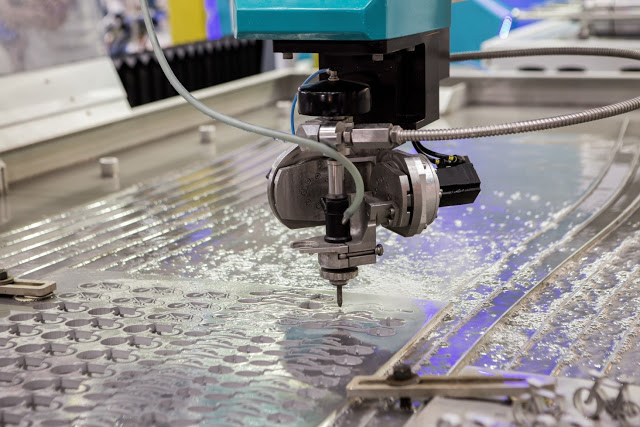 |
| What Is Machining? A Beginner’s Guide |
Did you know our word for
“machine” in English likely came from Greek for
“remedy” or solution?
Somehow, it’s fitting that our
word for shaping raw materials into a product or piece to solve a problem is
called “machining.”
So then what is it, and how can
it continue to shape our world? In this beginner’s guide, we’re going to
introduce you to the wide world of what machining is, and what it isn’t.
Grab your earplugs and goggles,
it’s going to get noisy!
Table of Contents
What Is
Machining?
As we already mentioned,
machining is one platform of using machines to create products for us. While
the process of material removal is usually extremely simple, the tools for
doing it are often extremely complex.
Let’s start chipping away!
The
Cutting Edge
The most common and simple types
of machining involve cutting away raw materials such as steel, wood, plastic,
or other metals and alloys. The three most common are:
- Turning
- Milling
- Drilling
Turning is where the work piece
spins on one axis at high speed, while a sharp tool presses against it. This is
best for cylindrical objects.
Milling is a term for a tool that
spins and removes material from the stationary work piece. While the bit of the
tool is spinning, the arm holding that tool can work on all axes and precisely
shape the materials.
Drilling, finally, is taking a
rotating tool and removing material from the stationary work piece. This is
usually to create a hole, or a channel, in the piece.
There Is
No Edge
Who said it was a bad thing to
lose your edge?
Something like glass or plastic
might shatter or melt.
How can you machine materials
like this? A few ways come to mind:
- WaterJet Cutting (WJM)
- Rotary Ultrasonic Machining
(RUM) - Electrical Discharge
- Laser
If there is high heat or a lot of
pressure required, though, not all materials are ideal for the kinds of
material removal we’ve already talked about. This is exactly when not having an
edge-tool is ideal.
Building
Up Instead Of Tearing Down
Not all types of machining are
destructive. Sometimes, we have to build our products from the ground up to
craft new and complex products.
This is where the exotic world of
3D printing is revolutionizing manufacturing. From plastic to glass, titanium
to human flesh, there is a need for better and better materials.
Aside from creating less waste
and being more eco-friendly, 3D printing is able to make an internal structure
that isn’t possible using normal processes.
What
Machining Isn’t
Machining is either an additive
or subtractive process, by the definitions we’ve laid out today. So it might
make you wonder “what is not machining?”
A few processes such as:
- Hot rolling
- Cold rolling
- Extrusion
- Forging
These processes neither add nor
subtract material, but rather change the form.
Forging, for example, is
basically hammering a material to make a sheet, whereas cold rolling makes
something like wire or rod, which makes coil
reels for storage.
We’ve
Topped Out
Congratulations, newbie, you’ve
“topped out” and your apprenticeship is over!
This was a brief summary of basic
machining techniques and technologies, but many production problems still need
solutions. Machining is projected to reach a market share of $414.17
billion by 2022, so you’re still in time to catch up!
If you just can’t get enough, be
sure to check out our other great topics!














